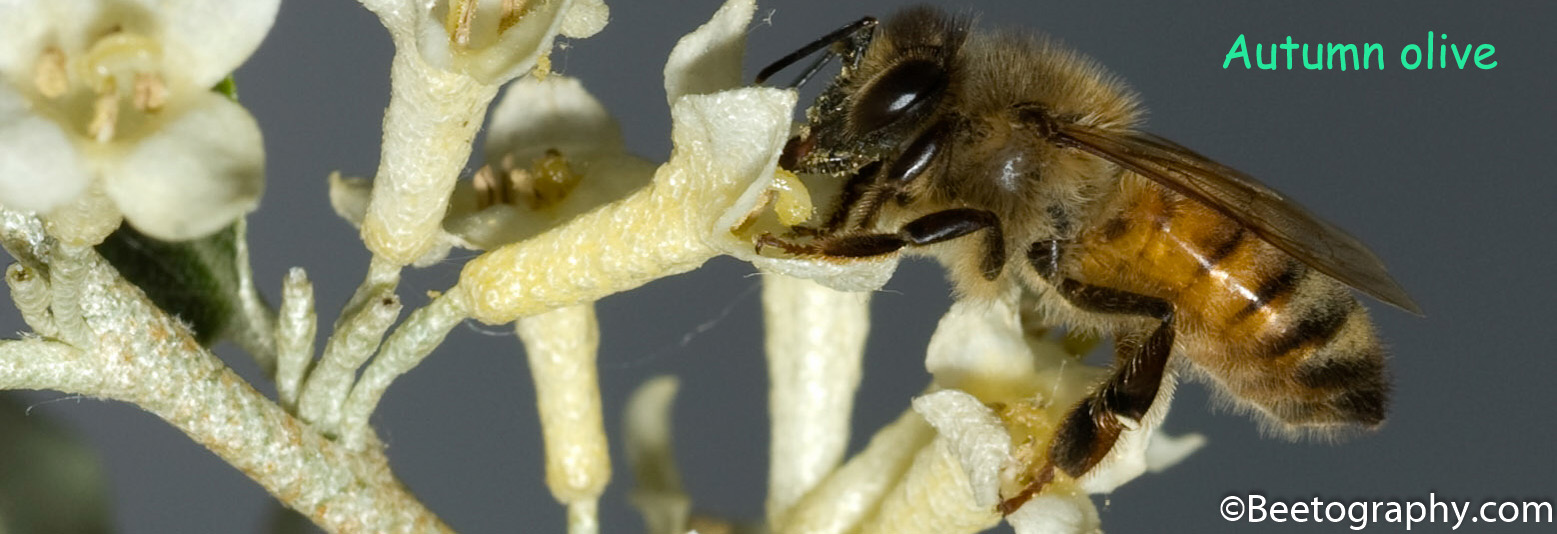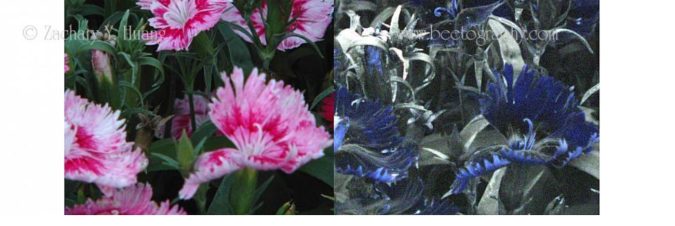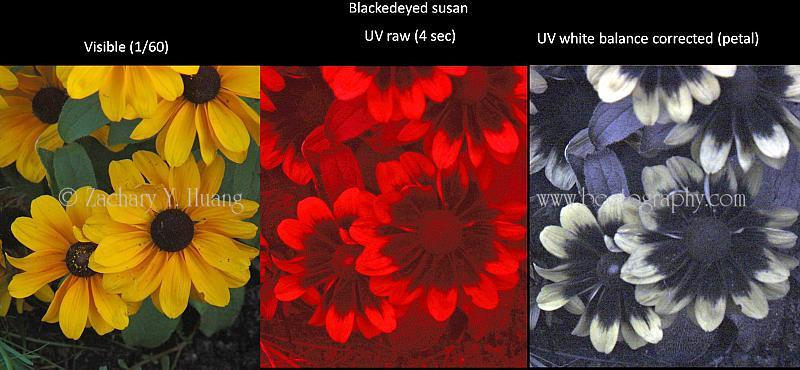Although we cannot see ultraviolet (UV, it was said young kids under 3 or 4 can actually see them, then as the cornea matured it becomes not transmissible to UV), nearly all insects are able to see them.
Insect vision is shifted to the shorter wavelength so they are missing some red color. For example, one can use a red flash light to work with bees, as long as the light is not too strong, bees will not react to it. So most insects are red color blind — they probably interpret the red as some form of dark grey.
So, actually most flowers are evolved to be seen by insects or more precisely, perhaps to be seen by bees. With the exceptions of many flowers humans bred for our own eye-pleasure (e.g. roses).
So what do bees see in these flowers, since they can see what we see (minus the red) plus the UV?
One way to know what do bees see is to hook up electrodes to the honey bee brain and shine light of different wavelengths to their eyes and record electric responses.
I can only use the simpler method: to use a camera. Alas, a Nikkor UV105 costs more than $6000 because it is made entirely of quartz. No way I could afford that. Then I bought my first lens, Enna Muenchen Teleanalyt, 1:2.8/135MM, still costing over $1200 including a filter which removes all infrared and visible light so only UV will pass to the camera.
My old Nikon D70 actually could see some UV light without modification (weak filter in front of CCD — most other cameras need surgeries to remove the filter). I took some photos in 2008 but never processed them. Because I have to teach students how to do UV photos tomorrow, I am processing some today.
Here the same flowers were shot with visible light (what we see) and one under UV. What the bees see will be actually the two superimposed together. There are ways to use photoshop to fuse two photos after one has gone through channel mixing. Another method is to use a filter which allows some visible light in (about 5%, otherwise UV will be so weak it will be swamped).
1. Blanket flowers. We see the center still mostly yellowish, but under UV it is very dark (UV absorptive). Notice the petal is still “yellow” but actually this is interpretation by the digital camera, based on the wavelength in UV. We do not know if that is really true to bees — I am pretty sure it would be a diferent yellow compared to the visible yellow color.
2. Black-eyed-susan is striking in that half of the petals are black under UV and outer half is more yello. But to our eyes we do not see the difference of the same petal in 2 different colors.
3. Anemone flower, we see as white is quite dark under UV and when properly white-balanced, it is actually in a pretty blueish hue.

4. Sweet williams. What we saw as very striking in color, perhaps are not so attractive to bees? I only saw 1 or 2 Apis cerana foraging on them in Thailand (and got a picture using a 1.2 Megapixel camera) but I have not see bees on it ever since.

These were taken by my own D70 (during 2004 I was told all photos would be copyrighted by MSU if I use a MSU camera, so I bought my own), which has been gifted to a friend in China. Without a D70, now I need to buy another camera to shoot UV. Only D40 or D70 can be used for UV without modification.




I see this was originally written a decade ago. Did you develop this further? I would love to discuss this with you in relation to native plants. Thanks!